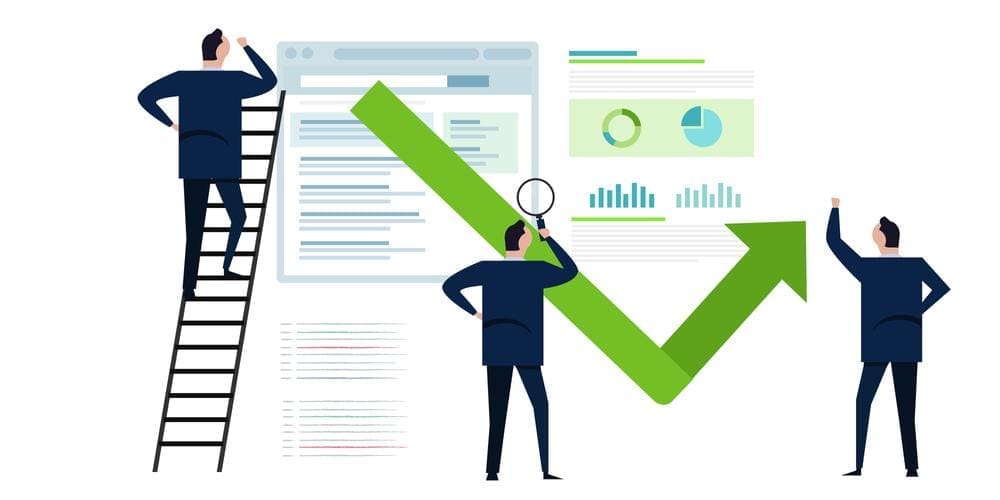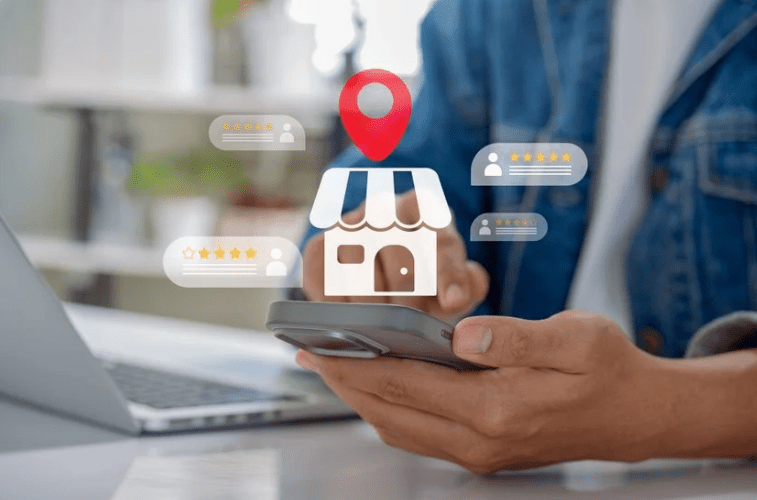A bounce rate is the percentage of visitors who leave your site after viewing only one page. This metric is calculated across your entire website and can give you a good idea of how well your site performs and where improvements must be made.
At WSI Web Enhancers, our digital marketing agency in Albuquerque, can improve your strategies and reduce bounce rates that stunt your business’s growth.
In this blog post, we’ll explain what constitutes a high bounce rate, what ideal bounce levels are, and how to reduce bounce rates.
What does a high or low bounce rate look like?
Bouncing is bound to happen no matter what you do. It’s inevitable that some people just might not be interested in what you have to offer at a glance.
However, there is such a thing as an abnormally high bounce rate percentage.
High Bounce Rate
A high bounce rate is around 70-90%. This level of bouncing usually indicates that your website’s content is irrelevant to what your visitors are looking for. If people are finding your site quickly but bouncing, your content likely doesn’t match their search intent.
If you have a high bounce rate, look at your website’s design and content to see if there are any improvements you can make. Ensure that your headings, URL, and content aren’t misleading and project relevant definitions of your products and services.
The page’s bounce rate is also high if it takes too long to load or has broken links. A landing page with a high bounce rate is ineffective and should be optimized.
Low Bounce Rate
A low bounce rate is around 20-40%. This level of bouncing usually means that your website is relevant to what your visitors are looking for and is easy to use.
If you have a low bounce rate, people are probably finding what they’re looking for and staying to read more. This level is challenging to achieve but possible with the proper optimization techniques.
What is the average bounce rate?
A reasonable bounce rate will depend on your website’s goals.
For example, a high bounce rate would be undesirable if you’re a blog site that wants people to read multiple articles.
However, if you’re a business that sells products online, a high bounce rate might not be so alarming because your goal is to get people to buy something from you. Once they buy your product, they might not need anything else from you.
The average bounce rate tends to be anywhere from 26-70%, and it’s up to you where you want to set your goal.

How can you reduce bounce rates for your website?
You can do a few things to reduce your website’s bounce rate.

- Improve your website’s design
- Ensure content relevancy
- Implement effective calls to action
- Optimize for the user experience
- Limit intrusive advertising
When people click on your site and are instantly bombarded with pop-up ads, a broken navigation menu, and unappealing design choices, they will likely leave without a second thought.
If, by chance, they decide to continue and realize that your content doesn’t match their search intent, it’s no question that they’ll leave your site.
Reducing bounce rates is about good digital hospitality and comfort. The landing page should give your reader a sense of professionalism and user consideration.
Our Digital Marketing Agency Effectively Reduces Bounce Rates for Albuquerque Businesses
WSI Web Enhancers can effectively optimize your website to reduce bounce rates and keep visitors engaged. We offer various services, including SEO content creation and custom website design, that put your visitors’ experience first. Our goal is to keep your users engaged, converting, and returning.
Contact our digital marketing agency in Albuquerque today to schedule a free consultation!
Related Articles
Easy Ways to Incorporate SEO into Your Web Design
Why is search engine optimization important?
Why Your Site Is Not Showing Up On Google

Jukka founded WSI Web Enhancers in 2012. His progressive and pioneering SEO approaches help businesses increase traffic while improving conversion rates. As an accomplished digital marketing authority, he spins effective web design, SEO, and social media engagement into winning strategies for local and national companies.






